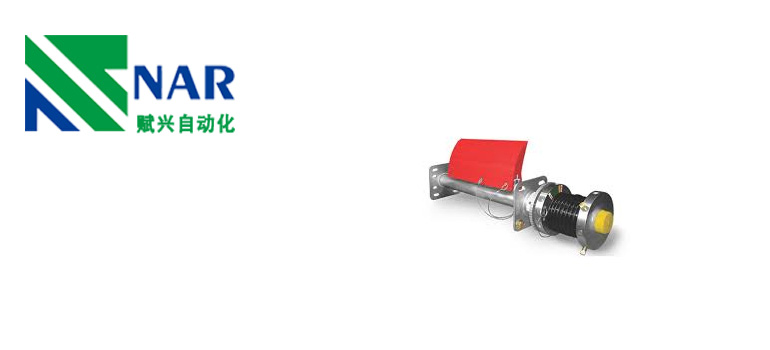What is a scraper cleaner?

A scraper cleaner is a device used to remove impurities and dust from conveyor belts. They are widely used in conveyor systems in various industries, including mining, building materials, metallurgy, chemical industry, and other fields. Different types of scraper cleaners have their own advantages and applicability.
Mechanical scraper cleaner
Mechanical scraper cleaner is a traditional and common type of scraper cleaner. It consists of one or more scraper plates installed on the conveyor, which come into contact with the conveyor belt through springs or other mechanical devices. When the conveyor belt is running, the scraper will come into contact with impurities and dust on the belt and scrape it away.
The advantage of mechanical scraper cleaners is that they are simple and reliable, suitable for various environments and materials. They can remove most dust and impurities, and are relatively easy to maintain and replace scrapers. However, mechanical scraper cleaners may cause wear on the surface of conveyor belts in certain situations, and their cleaning effect may not be ideal for conveyor belts with special shapes or materials.
Pneumatic scraper cleaner
Pneumatic scraper cleaner is a type of scraper cleaner that uses pneumatic force to remove impurities and dust from the conveyor belt. They are usually driven by the airflow generated by compressed air or gas. The pneumatic scraper cleaner has high cleaning efficiency and ability, suitable for environments that require more thorough removal of dust and impurities.
The advantages of pneumatic scraper cleaners lie in their efficiency and adjustability. They can adjust the cleaning force and frequency as needed and are suitable for various conveyor belt types and materials. However, pneumatic scraper cleaners require appropriate air sources and pneumatic equipment, and may generate noise and vibration during use.
Brush scraper cleaner
The brush scraper cleaner is a type of scraper cleaner that uses a brush to remove impurities and dust from the conveyor belt. They are usually composed of rotating brushes that come into contact with the conveyor belt to remove impurities and dust. The brush scraper cleaner is suitable for scenarios with high surface requirements for conveyor belts, such as the food industry or other environments that require maintaining cleanliness.
The advantage of a brush scraper cleaner is that its soft bristles can effectively remove small particles and dust, while not causing damage to the surface of the conveyor belt. They are suitable for various conveyor belt types and materials, and are relatively easy to install and maintain. However, brush type scraper cleaners may not be suitable for sticky substances or large impurities, and brush wear requires regular replacement.
The scraper cleaner is an important device used to remove impurities and dust from the conveyor belt. Different types of scraper cleaners include mechanical, pneumatic, and brush scraper cleaners. The mechanical scraper cleaner is simple and reliable, suitable for various environments and materials, but may cause wear on the surface of the conveyor belt. The pneumatic scraper cleaner has efficient cleaning ability and adjustability, suitable for scenarios that require more thorough removal of dust and impurities. The brush scraper cleaner is suitable for environments with high surface requirements for conveyor belts and can effectively remove small particles and dust.
When selecting a suitable scraper cleaner, factors such as conveyor belt type, environmental requirements, and cleaning efficiency need to be considered. At the same time, regular maintenance and replacement of scrapers or brushes are key to ensuring the normal operation of scraper cleaners. By selecting the appropriate type of scraper cleaner and taking necessary maintenance measures, the efficiency and reliability of the conveyor system can be maximized.
Application of scraper cleaner in conveyor
In conveyor systems, scraper cleaners are widely used in various industries and fields. Their main function is to remove impurities and dust from the conveyor belt, ensuring the smooth and efficient conveying process. The following are several common applications of scraper cleaners in conveyors:
Mining industry: In the transportation process of ore, coal, and other ore materials, scraper cleaners are used to remove dust, crushed stones, and other impurities from the conveyor belt. This helps to reduce the pollution of impurities on equipment and the environment, while improving the lifespan and efficiency of conveyor belts.
Building materials industry: In the production and transportation process of building materials, scraper cleaners are used to remove residues and particles brought by materials such as concrete, sand, bricks, etc. They ensure that the materials on the conveyor belt are clean, reduce the risk of accumulation and blockage, and thereby improve production efficiency and quality.
Metallurgical industry: In metallurgical processes, scraper cleaners are used to remove slag, metal shavings, and other waste materials to maintain the cleanliness of conveyor belts. This is crucial for the continuity of the production process and the normal operation of the equipment.
Chemical industry: In chemical production, scraper cleaners are used to remove dust, chemical residues, and other pollutants to ensure the cleanliness and safety of conveyor belts. This helps to avoid cross contamination of pollutants and reduce safety risks during the production process.
Food industry: In food processing and packaging processes, scraper cleaners are used to remove food residues, particles, and other pollutants. This helps to ensure the hygiene and quality of food while avoiding cross contamination and equipment malfunctions.
It should be noted that different industries and application scenarios may have different requirements for scraper cleaners. Therefore, when selecting and installing scraper cleaners, it is necessary to consider factors such as material characteristics, environmental conditions, cleaning efficiency, and make appropriate choices and adjustments based on specific needs.
